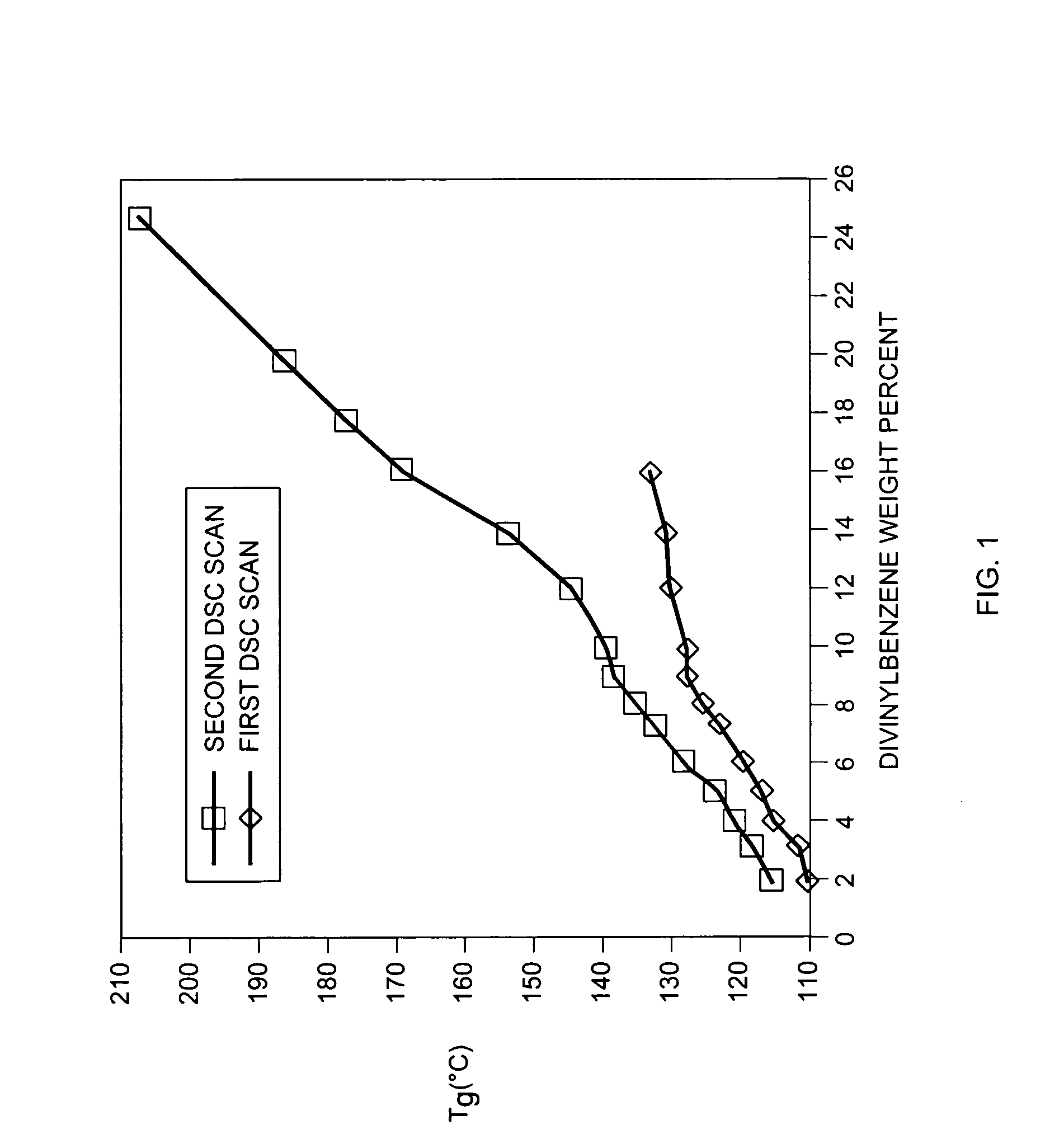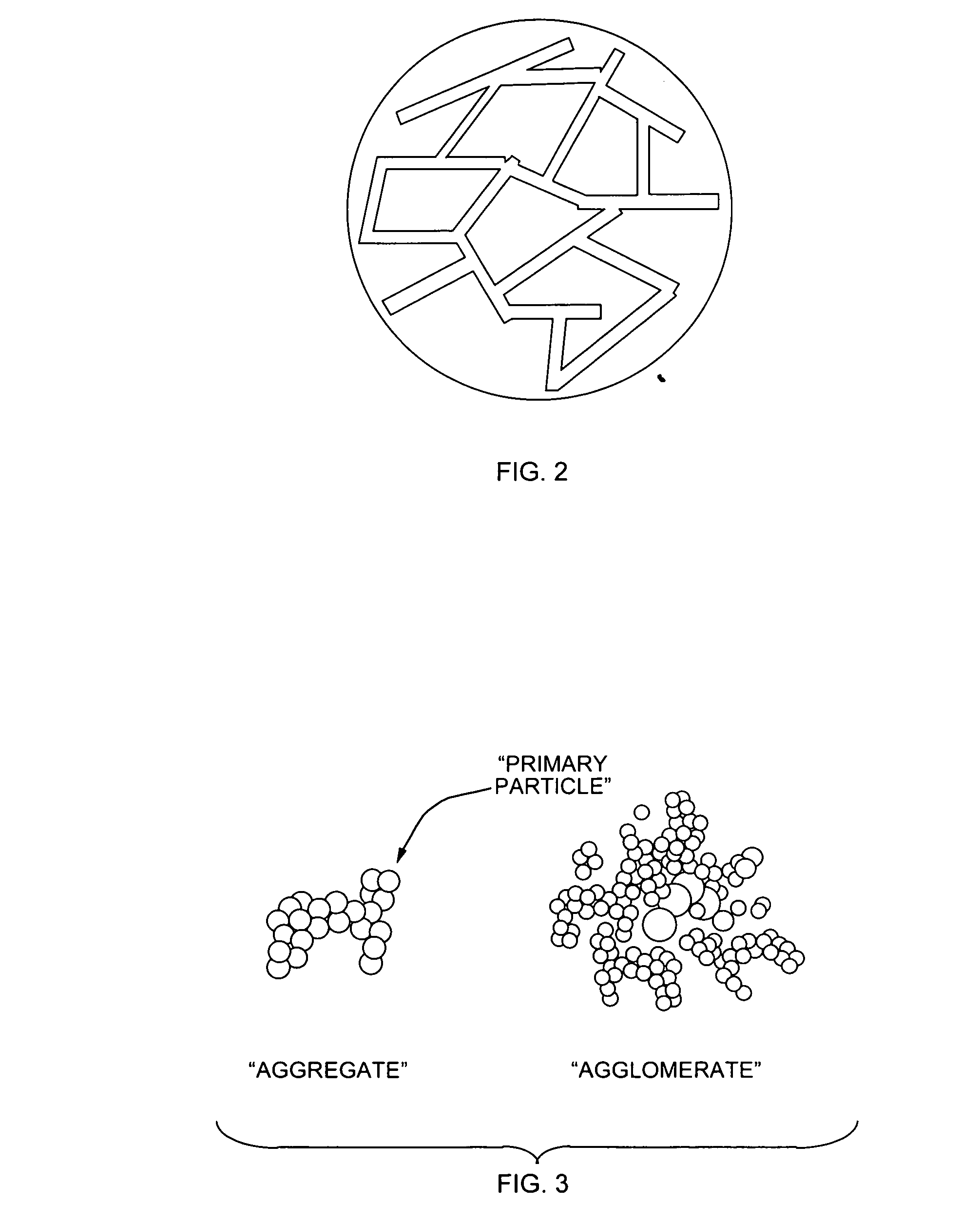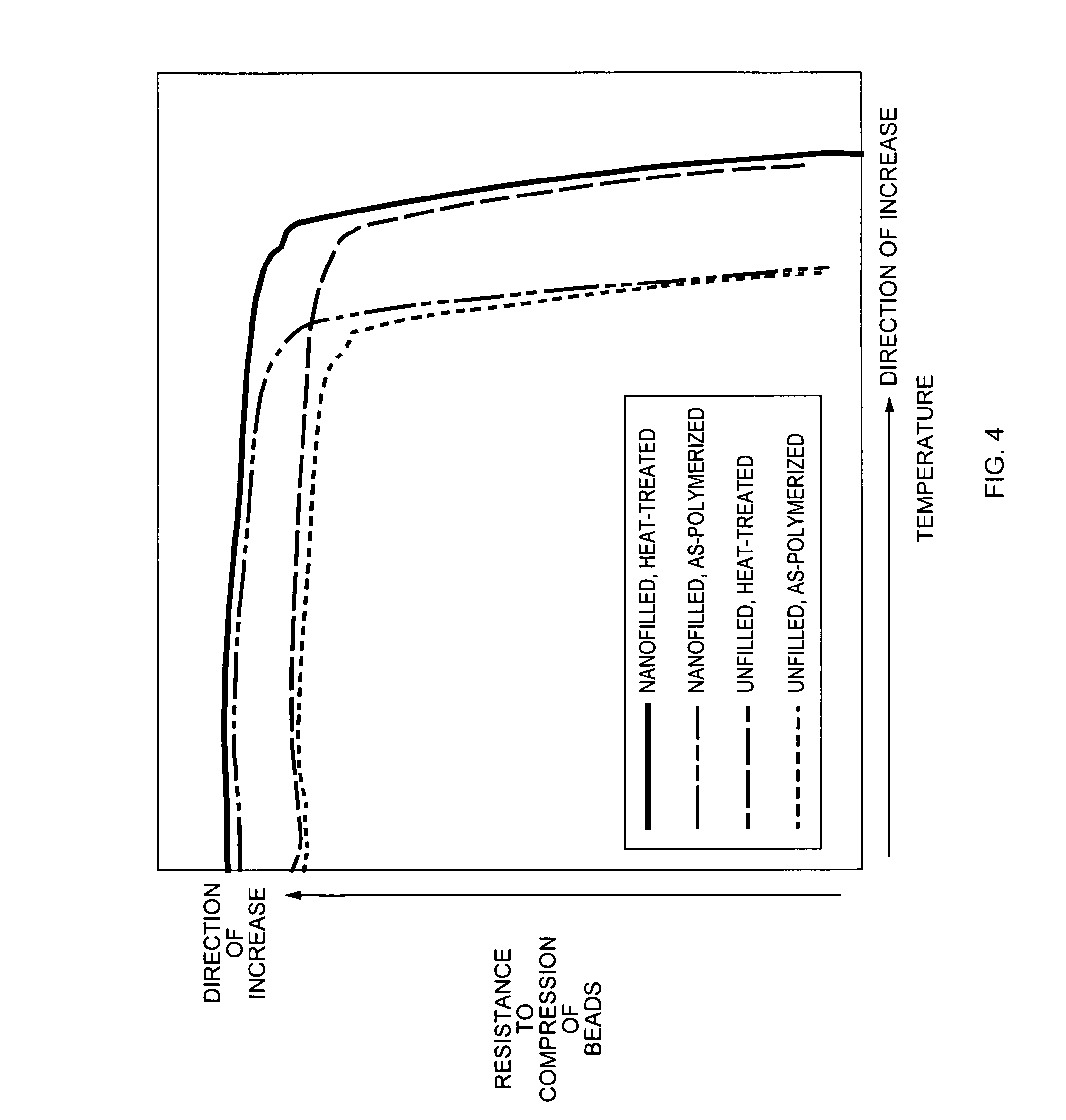Thermoset nanocomposite particles, processing for their production, and their use in oil and natural gas drilling applications
a technology of thermoset polymer and nanocomposite particles, which is applied in the direction of cellulosic plastic layered products, sealing/packing, and well accessories, etc., can solve the problems of inability to provide an acceptable balance of performance and price, and inventors still do not consider or describe polymeric particles as proppants, etc., to achieve optimal heat exposure schedule, enhance curing of said particles, and finite rate of heat transfer
- Summary
- Abstract
- Description
- Claims
- Application Information
AI Technical Summary
Benefits of technology
Problems solved by technology
Method used
Image
Examples
example
[0132] The currently preferred embodiments of the invention will be understood better in the context of a specific example. It is to be understood that said example is being provided without reducing the generality of the invention. Persons skilled in the art can readily imagine many additional examples that fall within the scope of the currently preferred embodiments as taught in the DETAILED DESCRIPTION OF THE INVENTION section. Persons skilled in the art can, furthermore, also readily imagine many alternative embodiments that fall within the full scope of the invention as taught in the SUMMARY OF THE INVENTION section.
A. Summary
[0133] The thermoset matrix was prepared from a formulation containing 10% DVB by weight of the starting monomer mixture. The DVB had been purchased as a mixture where only 63% by weight consisted of DVB. The actual polymerizable monomer mixture used in preparing the thermoset matrix consisted of roughly 84.365% S, 5.635% EVB and 10% DVB by weight.
[013...
PUM
| Property | Measurement | Unit |
|---|---|---|
| Length | aaaaa | aaaaa |
| Length | aaaaa | aaaaa |
| Fraction | aaaaa | aaaaa |
Abstract
Description
Claims
Application Information
 Login to View More
Login to View More - R&D
- Intellectual Property
- Life Sciences
- Materials
- Tech Scout
- Unparalleled Data Quality
- Higher Quality Content
- 60% Fewer Hallucinations
Browse by: Latest US Patents, China's latest patents, Technical Efficacy Thesaurus, Application Domain, Technology Topic, Popular Technical Reports.
© 2025 PatSnap. All rights reserved.Legal|Privacy policy|Modern Slavery Act Transparency Statement|Sitemap|About US| Contact US: help@patsnap.com



